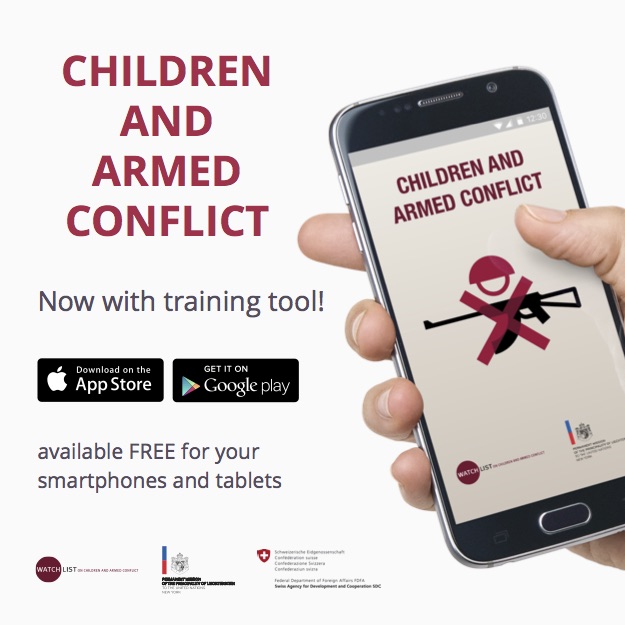On June 15, 2022, Watchlist co-sponsored a side event to the 15th session of the Conference of States Parties (CoSP) to the Convention on the Rights of Persons with Disabilities (CRPD), alongside Human Rights Watch, the UN Special Rapporteur on the rights of persons with disabilities, and the International Disability Alliance, among others. The event focused on protecting the rights of children with disabilities in armed conflict and provided an opportunity to follow up on discussions from Watchlist’s February policy workshop on children and armed conflict (CAAC). The following is Watchlist’s intervention from the event.
The international community has long acknowledged the disproportionate and grievous impacts of armed conflict on children and has built a consensus around the notion that children have no place in war. However, 25 years since the establishment of the UN’s CAAC mandate, we continue to learn how factors such as age, gender, displacement, and disability affect the unique experience of each child in armed conflict and how parties to conflict exploit these vulnerabilities. Children with disabilities remain largely invisible in the available UN data and reporting on CAAC. Yet, the risks are multiplied for children with disabilities in situations of armed conflict.
Children with disabilities are often at greater risk during attacks, including risk of abandonment. Those with physical disabilities may have greater difficulty fleeing from harm, and those with visual, hearing, developmental, or intellectual disabilities may face further complications in seeing, hearing, or understanding what is going on around them. They also face greater barriers than other groups to accessing basic services and humanitarian assistance, including health care and education. As a group, children are frequently excluded from decision-making processes affecting them, and, for children with disabilities, this is often the case.
In her office’s recent anniversary study, the Special Representative of the Secretary-General for Children and Armed Conflict noted that children with disabilities have not been given sufficient space within implementation of the UN’s children and armed conflict mandate, including a competent workforce to address their rights and needs and using appropriate, sensitive, and inclusive language.
In recent years, governments, the UN, humanitarian actors, and other stakeholders have taken steps toward strengthening the protection of the rights and wellbeing of children with disabilities and particularly those affected by armed conflict. Of the Security Council’s 13 thematic resolutions on CAAC, only the three most recently adopted mention children with disabilities. Resolutions 2225 and 2427, of 2015 and 2018, respectively, first acknowledged the specific needs of children with disabilities in armed conflict, recognizing the importance of addressing their needs, including access to health care, psychosocial support, and education. Last fall, the Security Council further elaborated on the importance of providing sustainable, timely, appropriate, inclusive, and accessible assistance to children with disabilities in armed conflict, including equal access to education, through its Resolution 2601, on protecting education from attack.
Governments, the UN, and their partners need to further implement these commitments and urgently take concrete steps to protect the rights and wellbeing of children with disabilities in armed conflict, including their access to basic services.
Member States who have not yet done so should promptly ratify the CRPD, the Optional Protocol to the Convention on the Rights of the Child (CRC) on the involvement of children in armed conflict (OPAC), and other relevant instruments, as appropriate, and take steps to harmonize their national laws with their obligations. Member States should also increase pressure on all parties engaged in hostilities to take concrete, effective measures to mitigate harm to children, including refraining from using explosive weapons with wide area effects in populated areas. Governments and donors alike should urgently prioritize efforts to mark and clear explosive remnants of war, especially in areas where displaced civilians are returning and where children are likely to pass through, such as along routes to and from schools. Furthermore, Member States should maintain and increase their financial and political support for child protection in humanitarian settings, including for those responsible for implementing the UN’s Monitoring and Reporting Mechanism (MRM), in order to ensure the necessary resources to further strengthen collection and analysis of data on grave violations.
The UN and its partners engaged in implementing the MRM, in turn, should further strengthen the collection of data on grave violations against children, including data disaggregated by gender, age, and disability. Improved data collection will promote a more informed response to violations and associated protection concerns, including to address the specific needs of children with disabilities. The UN and its partners should also invest in building staff capacity to increase awareness and understanding of the rights and needs of children with disabilities, ensure staff are equipped to provide the appropriate support, and take steps to address the specific needs and vulnerabilities of children with disabilities, including through the development and implementation of action plans to end and prevent grave violations.
Lastly, humanitarian and development actors, as well as peacekeeping and special political missions, should be accountable to the affected populations they are serving, including children with disabilities. This includes ensuring that these children and their families can actively and meaningfully participate throughout the humanitarian response, from planning stages through implementation, as well as in recovery and peacebuilding efforts.



